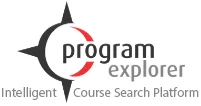• IELTS
The Braille System IELTS Reading Answers
16927 Reads
3 min Read
Reading test in the IELTS Academic Exam is a fourth part of the complete IELTS test that consists of three sections of authentic long texts from scholastic sources like books, magazines, journals, and newspapers about a wide variety of topics that an average undergraduate student can comprehend.
This blog will delve into finding answers to the IELTS academic reading passages about the braille system.
IELTS Preparation Tips for Reading Test
Candidates should check the frequency of the IELTS exam in a year and accordingly prepare for the test. It is important to give a designated time period for the preparation of each module. Following are some of the tips to follow for reading test prep.
• Reading, when enjoyed, can result in the ability to concentrate and gain an understanding of the text, pursuing the author’s key ideas.
• One can always try to summarize what they have read and rephrase in their own words. This helps in ameliorating the process of vocabulary building and strengthening of grammar.
• One of the most critical skills for IELTS test-takers is time management. One should take some time to note down some relevant keywords and the main point before outlining what one reads.
• While answering the reading questions, make sure to use the right spelling from the passage.
• It’s always helpful to get familiarized with the type of questions asked to test the comprehension of the passage.
• Always highlight keywords while reading and make note of important dates. It becomes easier to identify them when questions are asked about them.
IELTS Reading Passage - The Braille System
This braille system reading passage has extensive knowledge about the importance and functioning of the braille system for the blind. In this, 3 different question types are given along with answers and their explanations. The question types included are sentence completion, yes/no/not given, and summary completion. The thing is to believe in the IELTS skills but to never stop improving.
One should spend about 20 minutes on questions 1-13, which are based on the given passage.
Reading Passage
The braille is a tactile reading and writing system for people with acute visual impairment. It uses embossed dots in different combinations indicating letters, numbers, punctuation marks and markers for letter groupings. It is read using both hands, with the index finger having maximum use. People who use it can read it at a speed of about 125 words per minute on average. Some people can read up to 200 words in a minute. Individuals who are blind learn about the written word in the Braille alphabet including things like punctuation, paragraph formatting, and footnotes. The braille is equivalent to a new script of widely spoken languages.
Braille opens access to a huge range of texts for blind individuals. With a tactile script in place, they can now read and write textbooks, instructional texts, leisure reading texts, income reports, restaurant menus and everyday critical texts like contracts, laws, insurance plans, indexes, and cookbooks. Materials with braille, such as musical scores, songbooks, card games, and chess, enable blind individuals to enjoy activities and make the cultural settings more inclusive.
Braille has a long tradition that dates back to the beginning of the 18th century. In Bonaparte’s French army, a man named Charles Barbier invented a unique technique known as “night printing” so soldiers could talk peacefully at night. Barbier, a veteran of the military, saw the deaths of several troops who used lights after dark to understand battle signals. Because of the light from the torches, enemy combatants realized where the French soldiers were, causing the death of several men. Barbier’s “night printing” technique is made on an elevated 12-dot cell that is 2 dots wide and 6 dots deep. Inside the cell, each dot or mixture of dots denoted a letter or phonetic sound. The issue with the legal regulations was that the normal fingertip did not recognise any of the dots with a single touch.
Louis Braille was born in a French village called Coupvray on Jan 4, 1809. He went blind at a young age after accidentally stabbing himself in the eye with his father’s blade. Braille’s father was a leather maker who used a tool to punch holes in the leather goods he made. At the age of 11, Braille was inspired to change Charles Barbier’s “night printing” code to make an effective written correspondence device for all blind people. He had joined the National Institute of the Blind in Paris a year before. He spent the best part of the next 9 years designing and making a perfect pattern of raised dots that bears his signature, Braille.
With all of Braille’s efforts, the coding was now directed at cells of just 6 dots rather than 12. This crucial advancement meant that a fingertip could cover the entire cell unit with a single impression and travel quickly from one cell to the next. Braille eventually gained acceptance around the world as the main mode of written communication for blind people. Even today, there is no difference in the braille system from what he invented. However, some small changes have been made to the braille system, most notably the addition of contractions describing groups of letters or entire words that occur regularly in a script. Contractions allow for easier braille reading. It also helped to reduce the scale of braille books, making them even lighter.
In 1853, Braille passed away at the age of 43, a year before his native France adopted braille as the official correspondence method for the blind. In 1860, Braille made its way “across the pond” to America, where The Missouri School used it for the Blind in St. Louis. The legacy of Louis Braille has enriched the lives of millions of people who are blind. As a consequence, blind people from around the world learn from Braille’s work on a regular basis. Today, braille code has been transposed in a variety of languages all over the world. Braille will be proud to know that his work has helped many people get literacy over the years. The effect is largely inspiring and helps them to achieve success in their academics and their career paths.
Questions 1-5
Complete the sentences below.
Choose NO MORE THAN TWO WORDS AND/ OR NUMBERS from the passage for each answer.
Reading passages differ slightly in the content in terms of difficulty in IELTS general training vs academic tests. However, the types of questions are of the same format and pattern. Below are the questions from the passage.
• The Braille system is a contact reading and writing device for the blind where the _______ indicates the letters and numbers.
• The braille scheme became a success because it is made on a logical series of signs intended for the ________ instead of imitating signs designed for the eyes.
• Braille eventually gained acceptance around the world as the main mode of ________for blind people.
• Braille code has been transposed in a variety of ________ all over the world.
• The issue with the _______ was that the normal fingertip did not recognise any of the dots with a single touch.
Questions 6-10
Do the following statements agree with the information given in the Reading Passage?
Write-
YES, if the statement agrees with the claims of the writer
NO, if the statement contradicts the claims of the writer
NOT GIVEN if it is impossible to say what the writer thinks about this
• The average speed of reading using Braille is 125 words per minute.
• Braille cannot be used for reading contracts, laws, insurance plans, indexes, and cookbooks.
• Braille died in 1835 at the age of 43.
• Braille’s father was a leather maker.
• Contractions allow for easier braille reading and help to reduce the scale of braille books, making them even lighter.
Questions 11-15
Complete the summary below.
Write NO MORE THAN TWO WORDS from the passage for each answer.
Louis Braille was born in a French village called 11_____ on Jan 4, 1809. With Braille’s efforts, the coding was directed at cells of just 12______ rather than 12. Blind people from around the world learn from Braille’s work on a regular basis. It gave access to a wide variety of everyday items, including leisure and 13______ reading, income reports, restaurant menus and critical things. Today, 14_______ has been transposed in a variety of languages all over the world. In 1853, Braille 15________, at the age of 43.
Answers with Explanations
| Braille code | Explanation- Paragraph 6 includes the sentence, “Today, braille code has been transposed in a variety of languages all over the world.” Thus, the answer is braille code. |
| Coupvray | Explanation- A sentence in paragraph 4 says that “Louis Braille was born in a French village called Coupvray on Jan 4, 1809.” Thus, the answer is Coupvray. |
| Dots | Explanation- The mechanism of the braille system is clearly mentioned in paragraph 1- “The Braille system is a contact reading and writing device for the blind where the dots indicate the letters and numbers.” Since the sentence was so direct, the only missing word is ‘dots’. |
| Fingertips | Explanation- In the sentence, “The braille scheme became a success because it is made on a logical series of signs intended for the fingertips instead of imitating signs designed for the eyes. It clarifies that this method was meant for fingertip usage. |
| Instructional | Explanation- Paragraph 2 states, “Most importantly, braille gives blind people access to a wide variety of items, including leisure and instructional reading, etc.” The answer stands out here as instructional. |
| Languages | Explanation- As the line in paragraph 6 states, “Today, braille code has been transposed in a variety of languages all over the world.” The answer is thus- languages. Legal regulations |
| Legal Regulations | Explanation- The sentence states that “The issue with the legal regulations was that the normal fingertip did not recognise any of the dots with a single touch.” The missing word in the given question is legal regulations, and hence the answer is ‘legal regulations’. |
| No | Explanation- There is a sentence in paragraph 2, “Most importantly, braille gives blind people access to a wide variety of items, including leisure and instructional reading, income reports, restaurant menus and critical things in everyday adult life like contracts, laws, insurance plans, indexes, and cookbooks.” So, it’s not true that braille cannot be used for contracts, laws, indexes, cookbooks, etc. |
| No | Explanation- This sentence, “In 1853 Braille passed away, at the age of 43, a year before his native France adopted braille as the official correspondence method for the blind”, indicates clearly that the answer is No. |
| Passed away | Explanation- The answer ‘passed away’ has been taken from paragraph 6 and a sentence that states, “In 1853 Braille passed away, at the age of 43, a year before his native France adopted braille as the official correspondence method for the blind.” |
| Written Communication | Explanation- Paragraph 5 mentions that “Braille eventually gained acceptance around the world as the main mode of written communication for blind people.” Hence, it clearly states the answer to be written communication. |
| Yes | Explanation- The line from the paragraph, “They can read at a speed of about 125 words per minute on average.” This statement shows that Braille can be read at the speed of 125 words per minute, hence the answer is Yes. |
| Yes | Explanation- Paragraph 4 includes a sentence, “Braille’s father was a leather maker who used a tool to punch holes in the leather goods he made.” This statement matches the given question, and thus the answer is yes. |
| Yes | Explanation- This specific sentence from paragraph 5 says that “Contractions allow for easier braille reading. It also helped to reduce the scale of braille books, making them even lighter.” This statement clearly shows that the answer is yes. |
| 6 dots | Explanation- “With all of Braille’s efforts, the coding was now directed on cells of just 6 dots rather than 12.” Hence, the answer is 6 dots. |
For more detailed information on the IELTS Reading Test, contact Canamprep, the leading IELTS trainer who brings expertise in language skills.
Conclusion
The complete reading section, though, includes 40 questions on the whole. Here, we have given the first passage related to an important topic of the braille system of reading and writing. Most questions check the reading skills, ability to understand, and vocabulary of the students. To efficiently perform these tests, practice is inevitable. It is best to highlight important data, dates, and keywords to manage time when writing the IELTS exam. Candidates by now must be clear about how reading can improve their English and enhance their skills.
FAQ
Get great articles direct to your inbox
The latest news, articles, and resources, sent straight to your inbox every month.
Popular Universities to Study Abroad
World class education waiting for you.

Massachusetts College of Pharmacy and Health Sciences (MCPHS) University - Boston Campus
Massachusetts, USA • 48 Programmes
Tuition Fee : USD 39000-57000 / year

Northeastern University - Toronto Campus
Ontario, Canada • 24 Programmes
Tuition Fee : CAD 0-0 / year

La Trobe University - Bendigo Campus
Victoria, Australia • 49 Programmes
Tuition Fee : AUD 33000-76000 / year

Navitas Group - Eynesbury College
South Australia, Australia • 176 Programmes
Tuition Fee : AUD 28500-37000 / year


New Brunswick Community College - Fredericton Campus
New Brunswick, Canada • 14 Programmes
Tuition Fee : CAD 10500-11000 / year

Alliant International University - San Diego Campus
California, USA • 11 Programmes
Tuition Fee : USD 0-0 / year

Popular English Language Proficiency Exams
IELTS Online
- Live Classes
Blogs and Articles
Curated content to keep you updated on the latest education trends, news and more.
MBA in Australia for Indian Students: Best Universities, Requirements, Scholarship, Courses, Jobs
Updated on • Jul 08,2025 12:09 PM IST • Australia
Canada vs Australia: Which Country is Better for Indian Students in 2025?
Updated on • Jul 07,2025 12:46 PM IST • Education
France vs Germany: Which Is Better for International Students?
Updated on • Jun 30,2025 05:15 PM IST • Education
Top 10 Agricultural Universities in USA
Updated on • Jun 27,2025 05:25 PM IST • USA
Most In-Demand Future Careers in 2025
Updated on • Jun 26,2025 04:41 PM IST • Education
How Much Do Nurses Make in the U.S.?
Updated on • Jun 23,2025 03:59 PM IST • USA
Updated on • Jun 21,2025 02:00 PM IST • USA
MBA in UK: Universities, Eligibility, Types, and Career Opportunities
Updated on • Jun 19,2025 04:09 PM IST • UK • study in the UK
Highest Paying Jobs in the World
Updated on • Jun 10,2025 01:08 PM IST • Study Abroad
Scholarships in France for Indian Students
Updated on • May 29,2025 05:22 PM IST • France
Intakes in Dubai for Indian Students
Updated on • May 27,2025 03:34 PM IST • Study in Dubai
France Student Visa 2025 – Requirements, Fees, Checklist & Application Process
Updated on • May 23,2025 03:36 PM IST • France
MBA in France for Indian Students in 2025
Updated on • May 22,2025 05:35 PM IST • France
PTE Accepted Universities in Australia
Updated on • May 22,2025 05:31 PM IST • PTE
PTE Accepting Universities In USA
Updated on • May 22,2025 05:24 PM IST • USA
MBBS in UK: Colleges, Fees, Eligibility and Scholarships
Updated on • May 22,2025 05:13 PM IST • UK
MBBS in Australia: Top Universities, Syllabus, Cost of Study, Eligibility, Scholarships & Jobs
Updated on • May 22,2025 04:53 PM IST • Australia
Updated on • May 22,2025 04:36 PM IST • Study in Germany
Updated on • May 22,2025 04:20 PM IST • USA
Highest Paying Jobs in New Zealand for International Students
Updated on • May 22,2025 01:03 PM IST • New Zealand
Related Blogs and Articles
A little effort to provide an authentic and reliable content for keen readers!!
Updated on • 11-04-2025 • IELTS
Describe Your Hometown IELTS Speaking Part 1 Topic
Updated on • 07-04-2025 • IELTS
PTE vs IELTS : Know the Difference and Which is Easier?
Updated on • 21-03-2025 • IELTS
IELTS Exam Dates 2025 in India
Updated on • 18-01-2025 • IELTS
IELTS Reading Practice Tests 2025: Reading Passage and Sample Questions
Updated on • 15-01-2025 • IELTS
IELTS Letter Writing Topics 2025
Updated on • 15-01-2025 • IELTS
Canada IELTS band requirements 2025
Updated on • 10-01-2025 • IELTS
Updated on • 25-11-2024 • IELTS
Updated on • 21-11-2024 • IELTS
Updated on • 02-11-2024 • IELTS
Linking Words for IELTS Speaking - Word List & Tips
Updated on • 25-10-2024 • IELTS
IELTS Writing Task 2 - Academic and General Topics with Sample Answer
Updated on • 25-10-2024 • IELTS
IELTS Writing Task 2: Tips, Lessons & Models
Updated on • 25-10-2024 • IELTS
IELTS Test Report Form (TRF): Number, Tracking, Validity and Sample
Updated on • 25-10-2024 • IELTS
IELTS Speaking Samples and Answers
Updated on • 25-10-2024 • IELTS
Updated on • 25-10-2024 • IELTS
Updated on • 25-10-2024 • IELTS
IELTS Sample Charts for Writing Task 1 Practice
Updated on • 25-10-2024 • IELTS
IELTS GT Writing Task 1/ IELTS Letter Writing
Updated on • 25-10-2024 • IELTS
Updated on • 25-10-2024 • IELTS















